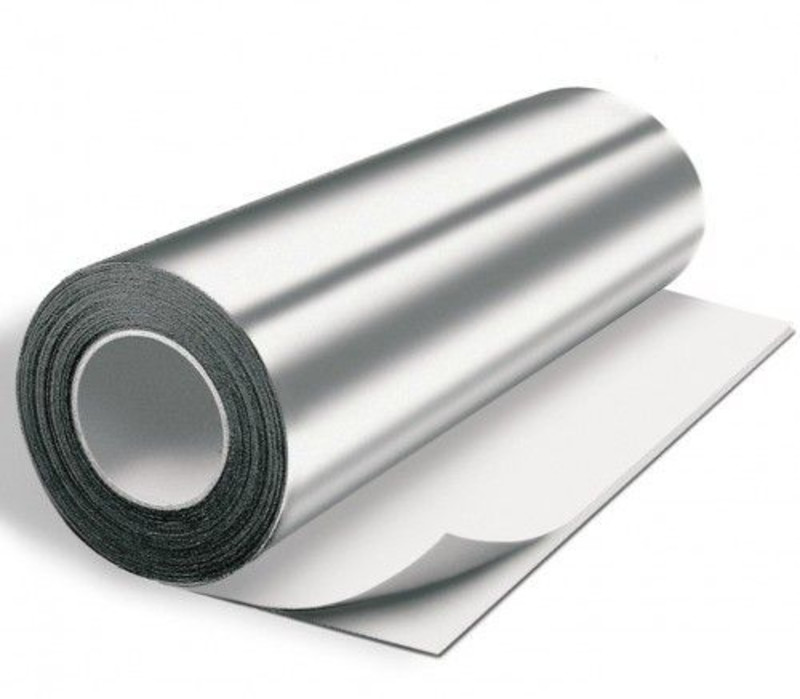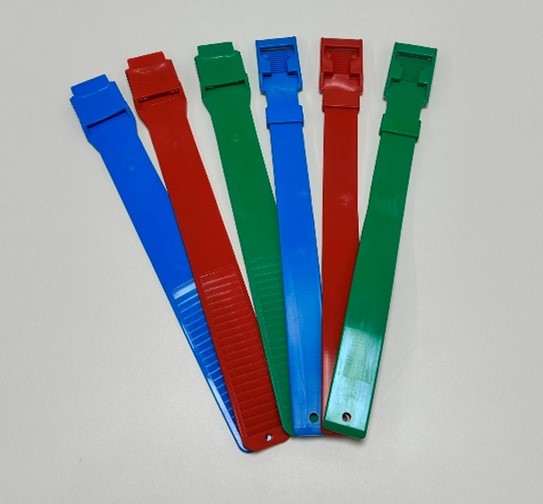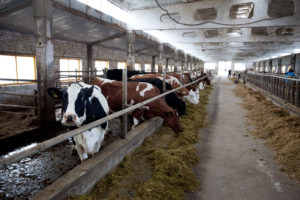Treatment of cages for rabbits

One of the important aspects of caring for rabbits is to create a clean and safe environment for them. Rabbits can quickly become sick or be attacked by parasites if they are placed in an unsanitary environment.
Dirty Cell Diseases
One common disease that can be caused by unsanitary conditions is pasteurellosis. This bacterial infection affects the respiratory system of rabbits, causing sneezing, nasal discharge, and difficulty breathing. Without treatment, pasteurellosis progresses to pneumonia up to a fatal outcome. Respiratory problems in rabbits are also often the result of the accumulation of ammonia fumes coming from dirty pans of urine and feces.
Pollution of the living space is fraught with gastrointestinal diseases in rabbits, such as bloating, constipation or diarrhea.
A parasitic attack with the impressive name "live dandruff" are breeding fur mites Cheyletiella spp. They are much larger than scabies mites and are visible to the naked eye on light-colored rabbits. The fur mite causes severe itching in rabbits, leading to infected sores and hair loss. For treatment, drugs with insecticides with pyrethrin or permethrin are used. These products are usually applied directly to the rabbit's skin and fur, and they work by killing parasites and their eggs. In some cases, oral medications prescribed by a veterinarian may be required.
Flies in a dirty cage not only carry dangerous diseases, but they can also lay their eggs on the rabbit's skin or fur. The hatched larvae burrow into the delicate skin, feed, and cause painful and potentially fatal infections.
How to treat a cage for rabbits
Quick cleaning of the cage can be done in 15 minutes and without much effort: it is easy to remove leftover food, wash the drinkers and feeders with hot water, and the trays with water with a little vinegar, and replace the bedding with fresh one.
General cleaning involves a more thorough treatment of rabbit cages, which is carried out in the warm season to quickly dry the treated surfaces.
You will need:
gloves to protect against germs or parasites that may be present in the cage. Gloves also prevent particles from allergic-causing cleaning products from reaching the skin. A stiff brush is a handy tool for brushing off the rest of the hair or debris from the bottom of the cage, scrubbing off stubborn stains. A scraper is useful for cleaning hardened waste from the bottom or side walls of the cage. The atomizer greatly simplifies the cleaning of the cage and improves the quality of processing. It is elementarily refilled with disinfectant solutions, you can choose sprayers with different volumes. Sponges and rags for wiping, broom, dustpan and garbage bags.
The sequence of actions consists of 5 stages.
1. Begin by carefully removing the rabbit(s) from the cage and placing them in a safe and covered area such as an aviary or carrier.
2. Remove all bedding.
3. Wipe the cage with a disinfectant solution, including rods or wire, brush off stains, solid accumulations of droppings and urine, also process the tray, rinse everything with clean water and let dry completely, preferably in bright sun.
4. Lay clean bedding in a dry cage.
5. Carefully return the rabbit or rabbits to the cage, provide fresh food and water.
Various compositions can be used as cleaning agents.
To clean a heavily polluted cage, some use a solution of bleach (also called whitewash) in 10 parts of water to soak for 30 minutes, after which the cage or its individual components are thoroughly washed with clean water.
Calcium salts tend to precipitate out of rabbit urine and form a hard material that adheres strongly to the bottom of the cage and trays. Stubborn deposits are moistened with a solution of white food vinegar for 10–20 minutes, brushed off with a stiff bristle brush (but not metal), then washed off. To prepare the solution, dilute one part white vinegar to four parts hot water, sometimes adding a little dishwashing detergent. Using APPLE cider vinegar instead of regular cider vinegar is also the best option for getting rid of the smell.
You can also use bleach, but then wash it especially carefully, because when it dries, it turns into SALT, which causes rust on the metal parts of the cage. For processing, part of the bleach is diluted with ten parts of hot water.
If the rabbit cage stains are too stubborn, you can mix baking soda with vinegar to make a paste that is very effective for cleaning.
Avoid heavily perfumed detergents. Rabbits are very sensitive to odors, and if you clean the rabbit hutch with such detergents, the smell will remain in it for a long time, as a result, the rabbits will become irritated.
There are special cleaning sprays for pets on the market today, which include fragrances. On the one hand, it is convenient to use a ready-made product and spray from a spray bottle, but on the other hand, if you want to save money, then a home-made vinegar solution does the job just as well as commercial products. You can also “adjust” the concentration of the solution for wiping the cage (weaker) or, conversely, stronger for cleaning stubborn stains.
Read together with it:
- Increasing egg production of laying hens in Kabardino-Balkaria: successes and prospectsThe increase in chicken population has been a key factor in this growth. Currently, the total number of laying hens in the republic has reached 2.3 million, a 14% increase over last year. This demonstrates that local farmers are actively expanding their farms by implementing modern technologies and poultry care methods. The main reasons for increased egg production include: Improved feeding: Farme...
- Indonesia: New rules to protect farm animalsKey Provisions of the New Regulation The new draft law , currently being reviewed, sets ambitious goals. it will cover all categories of animals—from farm animals to pets, service animals, and laboratory animals. The primary focus is on implementing a certification system for farmers who are committed to more humane and sustainable farming practices. This will not only improve animal welfare but a...
- Lipetsk farmers harvested the third million tons of sugar beets.The SUGAR beet harvest has crossed the halfway point. A total of 3.2 million tons of sugar beets have been harvested from 63% of the area allocated to this industrial crop. This year's area under sugar beets exceeds 118,000 hectares. The Dobrinsky District leads in gross sugar beet harvest, having already harvested 51......
- Austria will approve sanctions against Russia, which it delayed due to Raiffeisen.Austria has announced its support for the sanctions package against RUSSIA. it previously demanded that sanctions against Rasperia be lifted in order to compensate Raiffeisen Bank International for the €2 billion it was forced to pay by a Russian COURT ruling.Austria has decided not to block the adoption of a new package of EU sanctions against Russia, although it had previously made demands regar...
- In the Perm region, prices for chicken eggs and meat have increased in a month.Chicken eggs increased in price by 6.4%, while beef and pork increased by 1.9%. Prices for cooked chicken products also increased by 1.6%, by-products by 2.2%, and condensed MILK by 2.9% . Among non-food items, the most significant price increases were for knitted children's hats (by 5.4%) and men's jumpers (by 4.1%). Educational services and student dormitory accommodation also increased signific...
- Egg prices have skyrocketed in Omsk: a dozen now cost over 80 rubles.DespiteDespite price increases , Omsk Oblast still offers lower egg prices than the rest of the Siberian Federal District and RUSSIA as a whole. In some stores, such as Magnit, Pyaterochka, and Samokat, the price of a dozen eggs ranges from 54.99 to 119.99 rubles, depending on the category and manufacturer.......
- Eggshell Color: How Chicken Breed Affects Egg QualityThis is because micronutrients are added to the feed for young hens to promote their growth. As a result, what a hen eats affects the composition of her eggs . Brown eggs are typically laid by dark-colored hens, and white eggs are laid by white hens.
- A man stole a donation box from a church in the Mogilev district.Screenshot from a video released by the Mogilev Regional Executive Committee Department of Internal Affairs on October 14, MINSK . Representatives of a church located in the agro-town of Dashkovka, Mogilev District, contacted the Mogilev Regional Department of Internal Affairs (DIA) to report the loss of a box containing parishioners' donations and a coin box totaling over Br2,......
- Potato yields in Transbaikal farms exceeded 2024 levels by 20%.The potato yield in Transbaikal farms reached nearly 200 centners per hectare following the harvest campaign, according to Albina Koreshkova, HEAD of the regional Ministry of Agriculture. "Agricultural enterprises and farmers in Transbaikal have completed the potato harvest. Farms in the region harvested 542 hectares of potatoes and harvested 1......
- About shashlik, point of view, and dragons. An interview with Academician D.A. Baimukanov.PIONERPRODUKT.by continues its series of interviews with the eminent Kazakhstani scientist Dastanbek Asylbekovich Baimukanov , recorded by his younger brother, Syzdyk Asylbekovich Baimukanov. The first interview is titled: "A Story of Shepherds, Sheep, and Freedom . " The second interview is titled: " On Beshbarmak, Money, MEAT, Traditions, Genetics, and Selective Breeding." We remind you that num...





























































